Meeting Nobel laureates
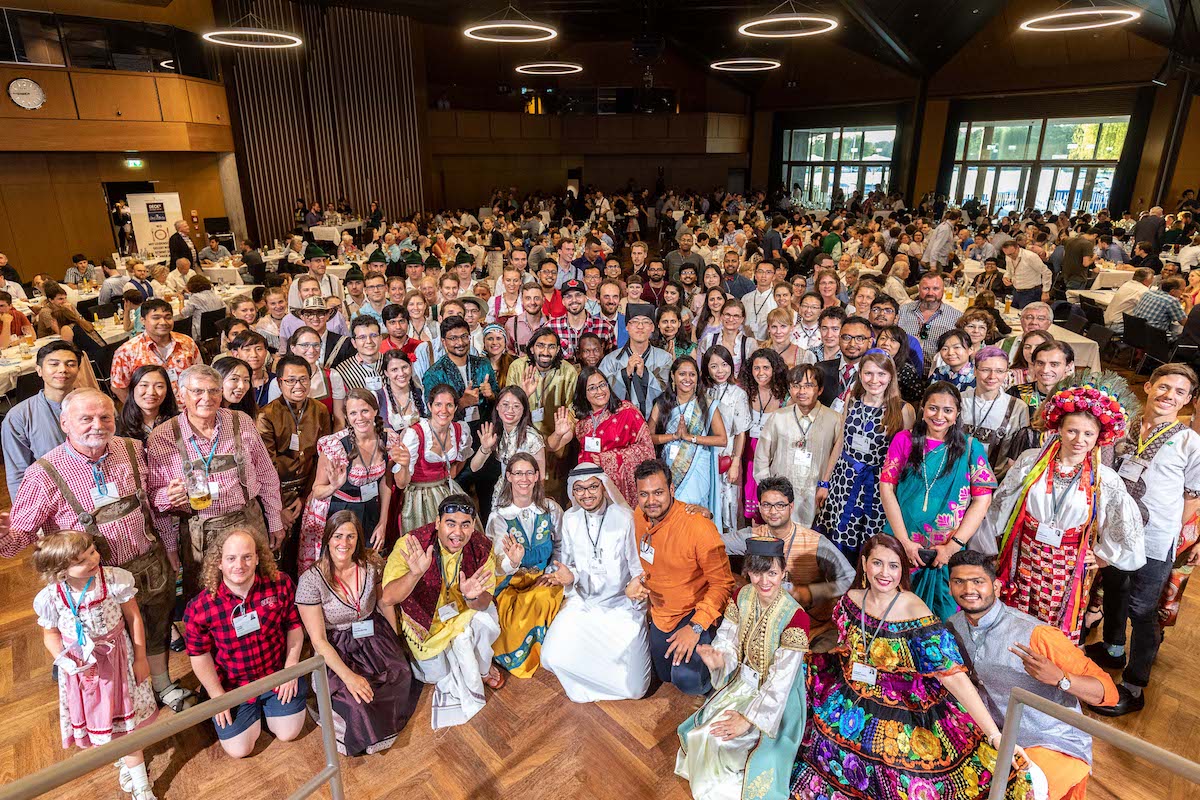
Four members of the University's research community took part in the 69th Lindau Nobel Laureate Meeting in Germany this summer. Photo by Christian Flemming/Lindau Nobel Laureate Meetings.
-By David Murphy, KAUST News
In 1950, Franz Karl Hein and Gustav Wilhelm Parade, physicians from the small German town and island of Lindau, came up with the concept of a forum for Nobel laureates to carry out scientific exchange in Lindau. A year later—and with the assistance of Count Lennart Bernadotte, a grandson of King Gustaf V of Sweden and someone with many contacts in Stockholm—the two pioneers realized their dream in the form of the first "European Meeting of Nobel Laureates in Medicine."
Seven laureates participated in the original 1951 forum, which, according to the Lindau Meetings' website, "was conceived as a European initiative of post-war reconciliation among scientists." In 1953, the event opened its doors to graduates, Ph.D. students and postdoctoral researchers.
The forum evolved into the annual Lindau Nobel Laureate Meetings—an event bringing around 30 to 40 Nobel laureates to Lindau to meet approximately 600 young international researchers. The Meetings encourage conversation among individuals from different disciplines, generations and cultures. Researchers and laureates discuss the latest developments in the Nobel Prize natural science disciplines: physiology and medicine; physics; and chemistry.
The 69th Lindau Nobel Laureate Meeting (#LINO19), which took place from June 30 to July 5, focused on physics—with an emphasis on laser physics, cosmology and gravitational waves.
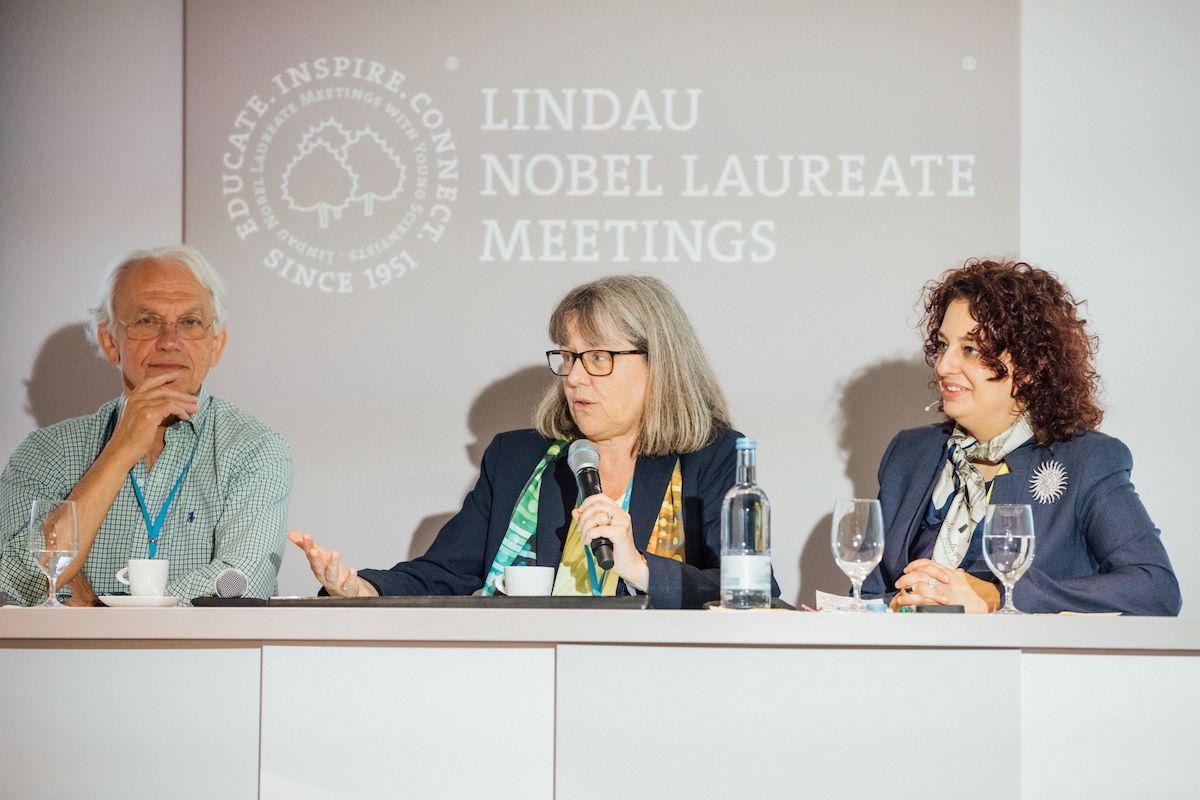
Nobel laureates Gérard Mourou (left) and Donna Strickland (center) participate in a press conference during the 69th Lindau Nobel Laureate Meeting. Photo by Julia Nimke/Lindau Nobel Laureate Meetings.
Meeting Nobel laureates
The 2019 event provided an opportunity for science's next generation to interact with 39 Nobel laureates, including Donna Strickland and Gérard Mourou, 2018 laureates in physics.
Among the 580 young scientists from 89 countries in attendance were four young researchers from the University: postdoctoral fellow Abderrahmen Trichili; KAUST Ph.D. graduate Ibrahim Dursun; and students Abdullah Almansouri (Ph.D. student) and Latifah Al Maghrabi (M.S. student). Participants took part in lectures, forum-style talks, science walks, dinner events and open exchanges.
The University's attendees recently sat down with KAUST News to describe their time at #LINO19, their research and their personal and professional journeys at KAUST.
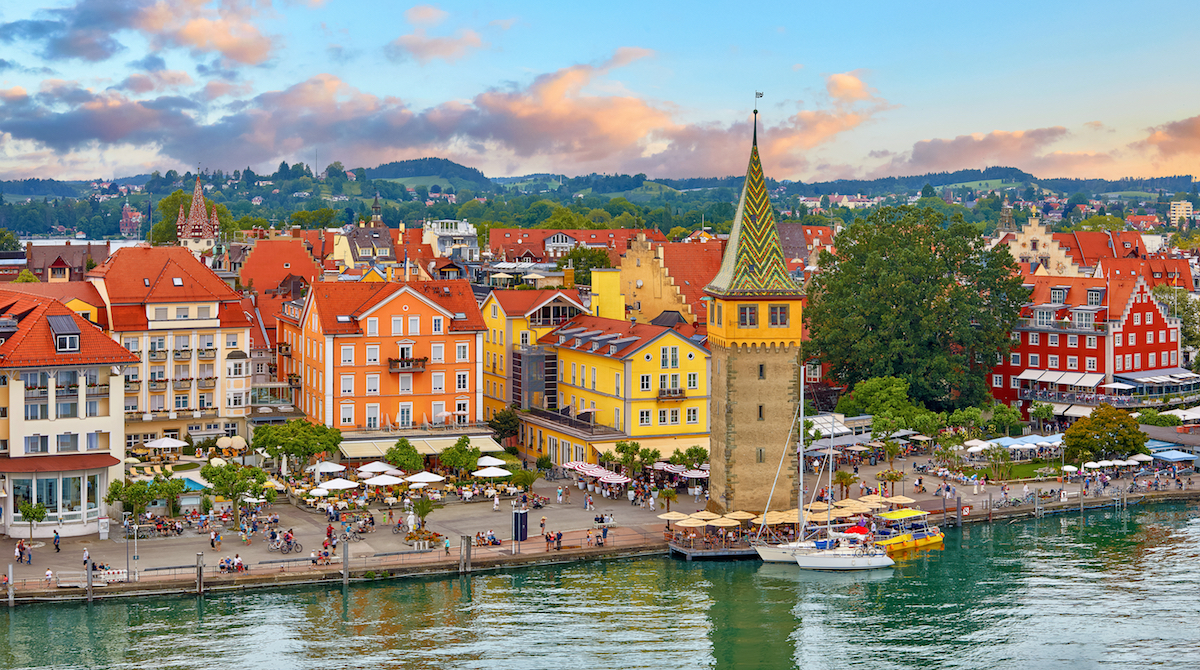
The German town of Lindau (pictured) has hosted the Lindau Nobel Laureate Meetings since their inception in the early 1950s. Image courtesy of Shutterstock.
How did it feel to attend the 69th Lindau Nobel Laureate Meeting?
Abdullah Almansouri: To attend such a meeting, to learn from eminent scientists and to make connections with top young scientists was such a truly enriching experience. [These] healthy interactions paved the way for us to get inspired, to learn, to make connections and to exchange knowledge.
Ibrahim Dursun: It was a fantastic experience for me as a young scientist to attend [the event]. Discussing physics and networking with the other energetic young scientists from all around the world was an extraordinary experience…I highly recommend all young scientists to apply [for the event]. It is a truly unforgettable and [a] once-in-a-lifetime experience. [I would like to thank my] Ph.D. advisor Professor Osman Bakr and KAUST for nominating me for this wonderful opportunity.
Latifah Al Maghrabi: It was really astonishing and I learned a lot. Honestly, it felt as if every time I got to meet a young scientist, we would just start an informal poster session. The Nobel laureates [also] treated us with kindness and humility.
I am still dazzled by something that [Nobel laureate] William Phillips told us. He mentioned that he never misses an invitation to attend the meetings because he "wishes to meet us—the young scientists." The laureates wanted to get to know us and interact with us as much as we wanted [to meet them]. They encouraged us to ask questions—personal, technical, philosophical and even political. They agreed that we need to use science to solve the issues we face in our respective societies and that the best scientists are a blend of theorists and experimentalists. I had a chance to meet people with an immense passion for science…It was the highlight of my year and [it was] the best six days.
Abderrahmen Trichili: I was enormously happy when I first received the [invitation, and] I felt very fortunate that I was among the four selected researchers from KAUST. Attending the Lindau Nobel Laureate Meetings is not an ordinary event—you can only attend it once, and if you want to go there again, you have to win a Nobel Prize.
The laureates were very down-to-earth [people who] answer[ed] all kinds of questions that they received, and the meeting was [also] a great occasion to connect with young scientists [who were] full of energy and motivation.
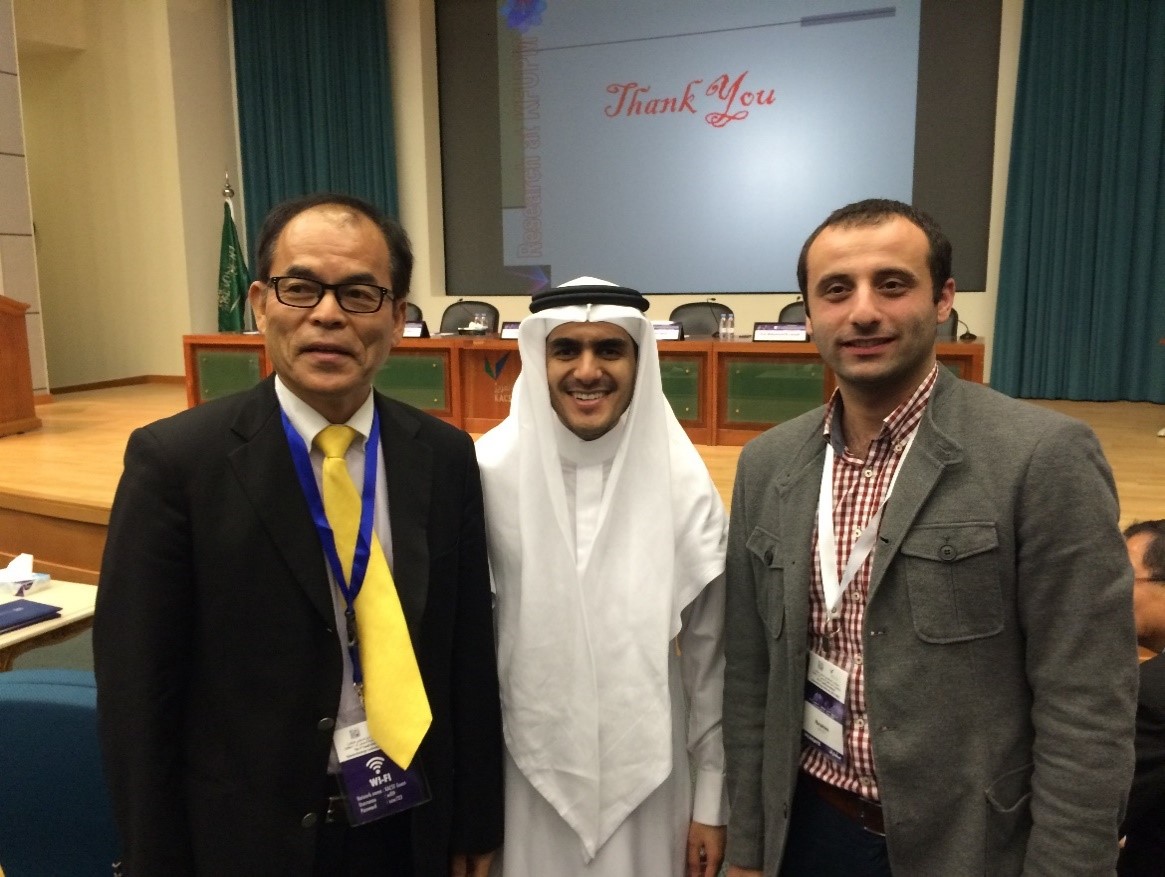
KAUST Ph.D. graduate Ibrahim Dursun (right) stands with his Ph.D. advisor, KAUST Professor Osman Bakr (center), and Nobel laureate Shuji Nakamura (left) at the 69th Lindau Nobel Laureate Meeting. Image courtesy of Ibrahim Dursun.
What are your takeaways from attending the meeting?
Al Maghrabi: I came back to KAUST with an open mind, [and I was] full of energy and readiness to tackle the problems I [have been] solving head-on. I had the opportunity to meet young scientists working on projects [similar] to mine and [I] got to learn about the latest [trends] in my field. I also loved hearing the stories and physics that led to the Nobel Prizes from the physicists themselves. I learned so much; the world of physics is quite vast, and in one week, I could only take a peek into some of its dimensions.
Almansouri: Through many intellectual discussions, I believe that the Lindau Meeting elevated my mindset to higher levels—where the intersection between science and passion can lead to a better future for humanity. As an engineer, it is important for me to learn [about the] new discoveries in physics. Even if [these are] not directly related to my current work, the topics are important to widen my horizons as a scientist. Eventually, engineers transform these new discoveries into tangible applications that transform our lives.
I am glad that I learned more about black matter and gravitational waves. After all, this "dark matter" is thought to account for about 85 percent of the matter in our universe.
Trichili: The event was extremely inspiring, and the exchange with the laureates gave me a lot of insight into research and physics in particular. Beyond new knowledge of physics, some of the takeaway messages I [gained] from the event [were]: Develop your communication skills and learn how to clearly communicate your research through scientific papers; you should surround yourself with smart people; and learn that little bit extra—work that little bit extra.
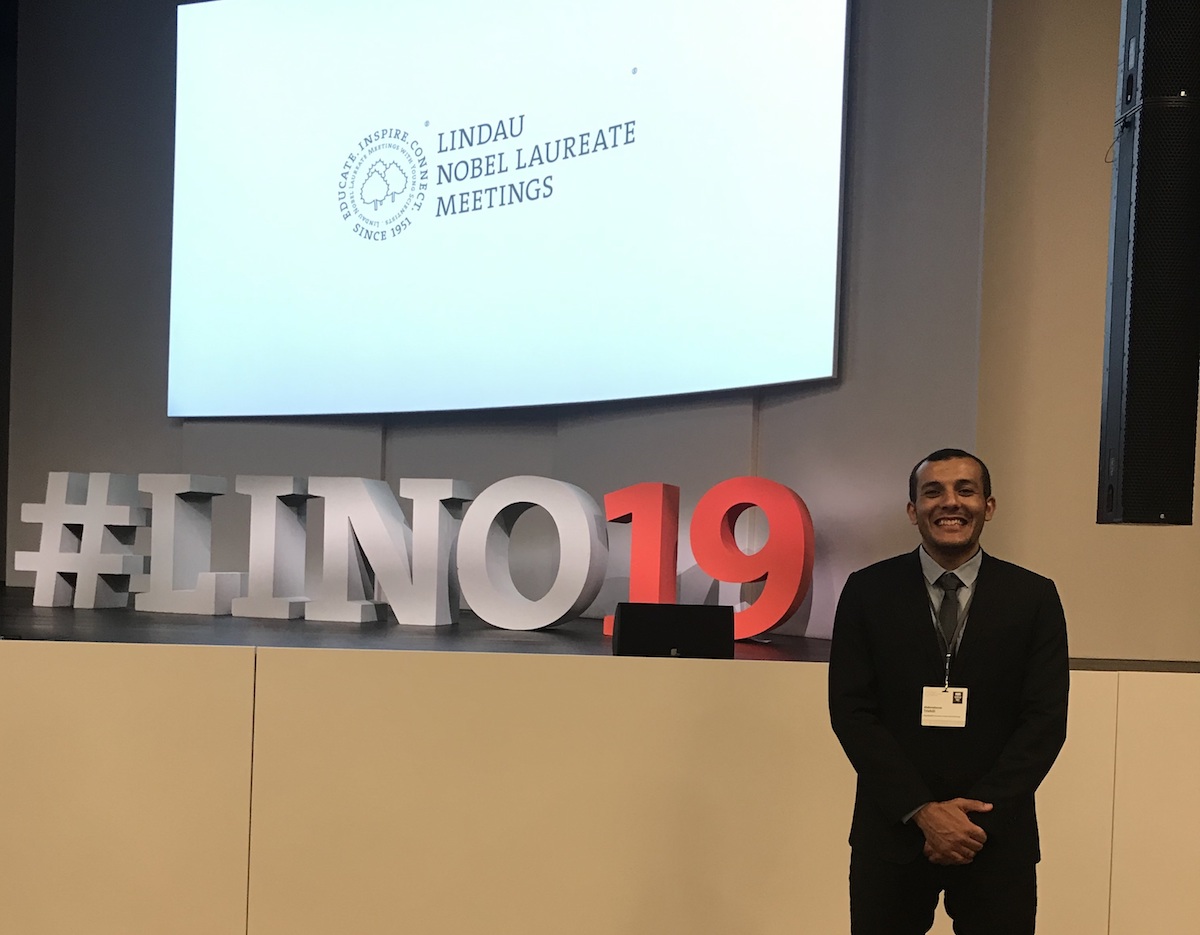
KAUST Ph.D. student Abderrahmen Trichili noted that taking part in the Lindau Meeting was not 'an ordinary event.' Image courtesy of Abderrahmen Trichili.
Why did you choose KAUST as the next step in your academic career?
Trichili: My KAUST story began when I randomly met with Associate Professor Frédéric Laquai at the SPIE [International Society for Optics and Photonics] Optics and Photonics conference in San Diego in 2015. He told me [about] how good the research environment is at KAUST [and the University's] world-class faculty members, as well as the finest facilities [at KAUST] that could possibly exist in an academic institution. He said, "KAUST is very selective and there are only places for the best." Since that day, I set going to KAUST as a good plan to start my post-Ph.D. career. He probably does not remember our talk, but that…chat was a life-changing event for me.
Al Maghrabi: My journey with KAUST started more than seven years ago when I was recruited to the fourth cohort of the KAUST Gifted Student Program in 2012. [Then] in 2017, I was a Visiting Student Research Program intern at the Photonics Laboratory. I remember reading about visible light nanowire lasers and being fascinated by the project. Due to the limited time of my internship, I didn't get to work on nanowire lasers, but luckily I had a chance to work on nanowire LEDs, which was amazing. Last year, I graduated from Georgia Tech and joined KAUST as a master's [degree] student in the electrophysics track of the [University's] Electrical Engineering program.
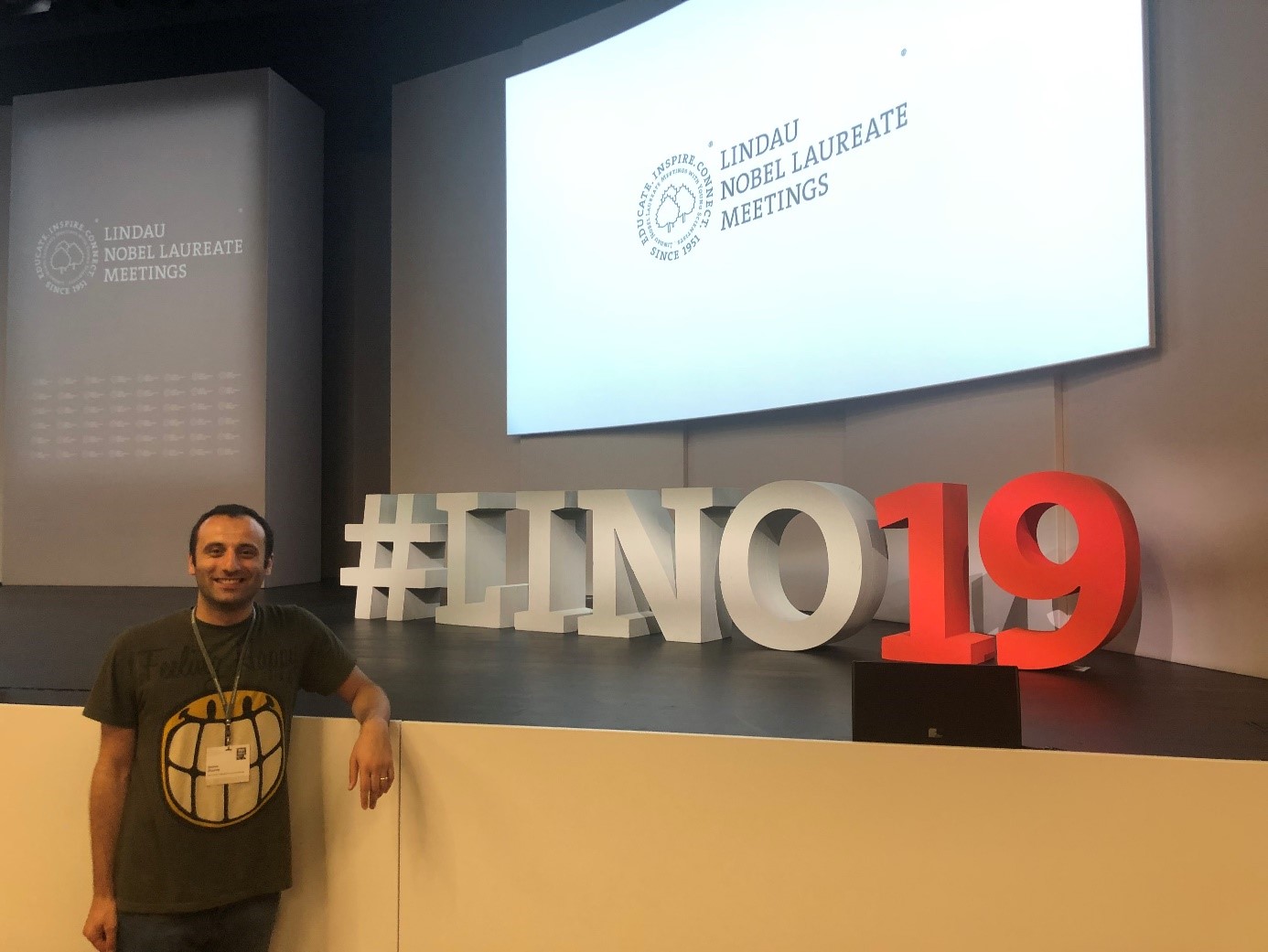
KAUST alumnus Ibrahim Dursun (Ph.D. '18) (pictured) stated that attending the 69th Lindau Nobel Laureate Meeting was a 'fantastic' and 'extraordinary experience.' Image courtesy of Ibrahim Dursun.
Describe your research at KAUST.
Al Maghrabi: I am working under Professor Boon Ooi in the Photonics Laboratory. My work in the laboratory involves investigating nanostructured materials for optoelectronics devices, which include LEDs, lasers and photodetectors. Throughout my short [research] journey, I have been studying nanowires from almost all across the spectrum (UV-IR). I have also characterized 2D materials, including MXenes and MoS2.
Almansouri: I am exploring different sources of ambient energy to wirelessly power sensors. My ultimate goal is to enable battery-less devices in (i) urban environments in general by using the RF (i.e., WiFi and cellular networks) energy and (ii) in remote underwater applications by harvesting from the motions. Such ambient energy sources are relatively small; hence, harvesting and converting them efficiently into a more useful form of energy is a challenging task.
Trichili: My main research direction is spatial mode multiplexing (SMM) in free space and special optical fibers known as few-mode fibers. The idea behind this research is to use the spatial structure of the light as an additional degree of freedom for optical communications providing access to a larger number of communication channels. SMM is viewed as a versatile technique to increase the capacity of communication systems for the future 5G and 6G eras.
Dursun: During my doctoral studies at KAUST, I worked on engineering the properties of halide perovskites to understand the fundamental photophysical processes leading to their extraordinary behavior and to translate this understanding into optoelectronic applications such as solar cells, light-emitting diodes and optical communications systems.
Abderrahmen Trichili discusses his e-poster with a fellow participant during this summer's Lindau Nobel Laureate Meeting. Image courtesy of Abderrahmen Trichili.
What do you hope to achieve with your research in the future?
Almansouri: My work has great potential not only in smart cities, but it also can be used to improve the quality of life for individuals. I am in the process of realizing an innovative product that can help paralyzed people to have more comfortable and happy [lives] by performing their everyday tasks independently.
Trichili: My plan for the next few years is to pursue a career [as] a researcher. I have recently been awarded a MULTIPLY Marie S.-Curie Postdoctoral Fellowship [in Photonics], which I will use to…move my work on structured light communication beyond laboratory test benches and conduct real-world trials. After this, my aim is to work on optical quantum communication, something that...will be surely a topic of [the] future. At some point, when I have enough research experience, I will apply for a [position as a] professor. I also have a plan to open an R&D startup on optical communication.
Al Maghrabi: I always hear others say, "dream big," but I believe in smaller dreams that incrementally lead to a larger one—just like light amplification. I wish to continue being humbled by discovery, and I hope that one day, our discoveries will lead us to solve novel and intriguing problems. As an engineer, I shoulder the responsibility of advancing my society specifically—and humanity more globally. When I [have] a doctor[al degree] in my hand…I will have the resources to guide others with a passion for learning and drive for change.
Related stories:
- Young KAUST scientists attend 65th Lindau Nobel Laureate Meeting
- Three doctoral students headed for Lindau
-
KAUST scientists to attend Nobel Meeting

